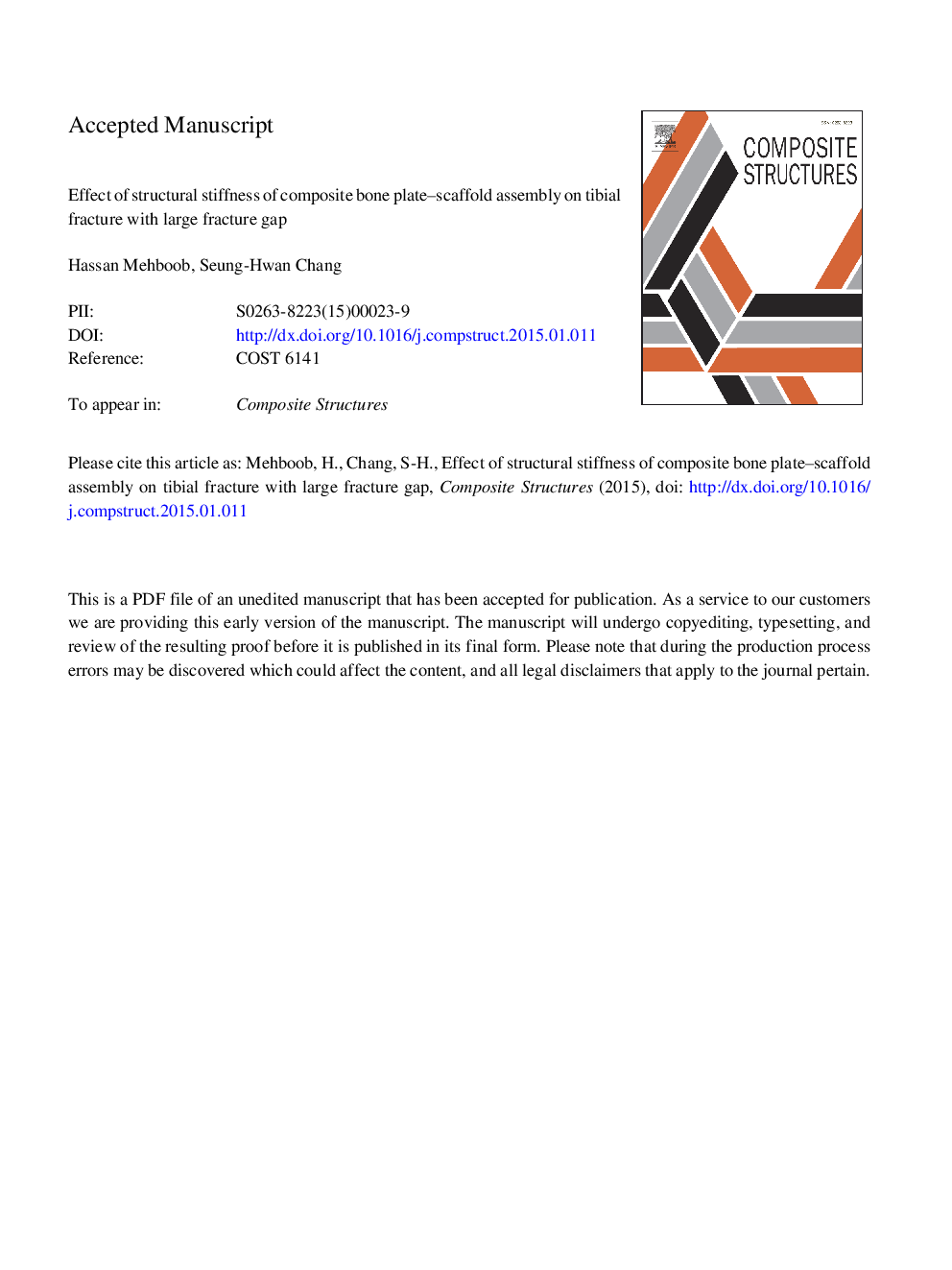| Article ID | Journal | Published Year | Pages | File Type |
|---|---|---|---|---|
| 6706974 | Composite Structures | 2015 | 35 Pages |
Abstract
In high-energy trauma, severe segmental bone fractures are generally fixed using a combination of a bone plate and a scaffold. In the present study, simulation of the bone healing process of a fractured tibia with a 30Â mm fracture gap to which a bone plate-scaffold assembly was applied was performed. A flexible composite bone plate was used to assemble the bone fractures, and a scaffold was inserted in the defected segment. It is well known that the material properties of a bone plate and scaffold affect the healing progress of bone fractures. Therefore, three polymer-based composite materials with different Young's moduli and a few functionally graded materials (FGMs) were used to construct the scaffolds in order to investigate the effect of structural stiffness on the healing process of fractured bones. A mechano-regulation algorithm with a deviatoric strain was programmed in a user subroutine, and iterative calculations were performed using the commercially available finite element code ABAQUS 6.10 to estimate the tissue differentiation process during bone healing. The most appropriate combination of a bone plate and scaffold was proposed for a particular fracture configuration.
Keywords
Related Topics
Physical Sciences and Engineering
Engineering
Civil and Structural Engineering
Authors
Hassan Mehboob, Seung-Hwan Chang,
